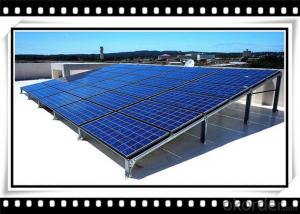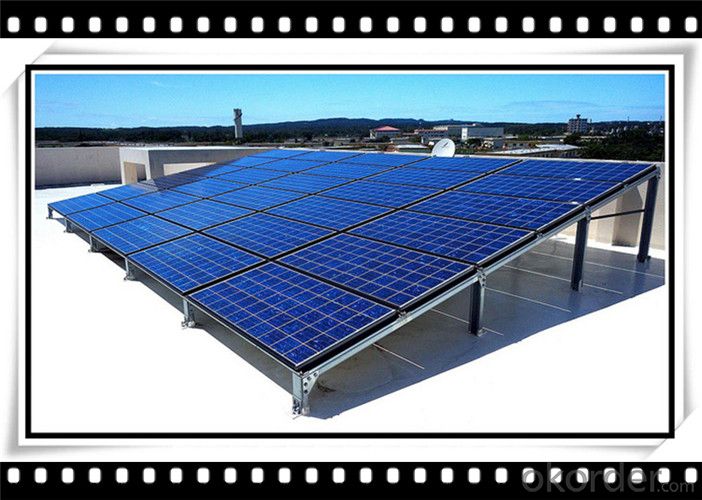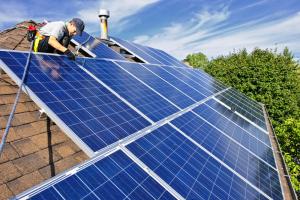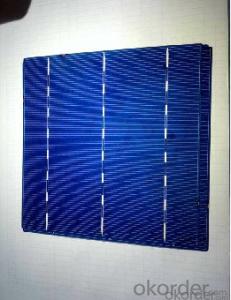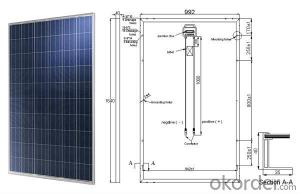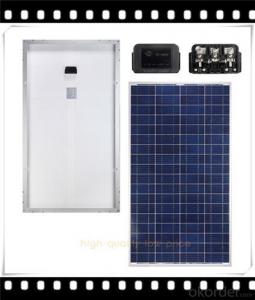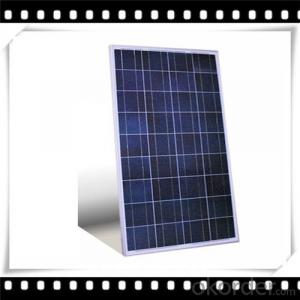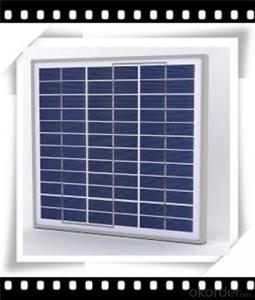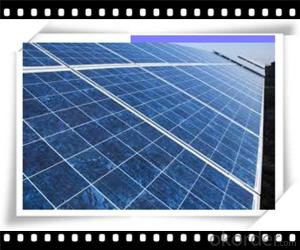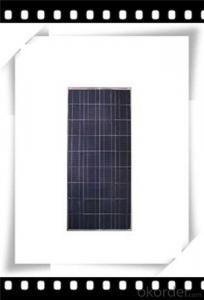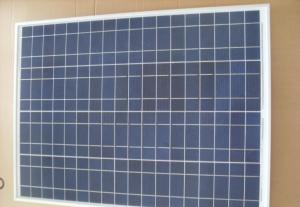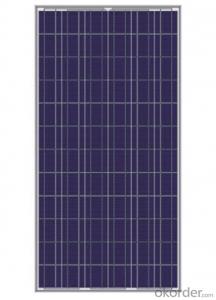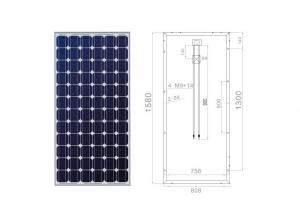FS22 Solar Panels - 1W Poly Mini Newest Solar Panel CNBM
- Loading Port:
- Qingdao
- Payment Terms:
- TT OR LC
- Min Order Qty:
- 10 set
- Supply Capability:
- 300000 set/month
OKorder Service Pledge
OKorder Financial Service
You Might Also Like
Polycrystalline Solar Modules
CNBM offers a range of small, medium and large polycrystalline solar modules, designed for a range of requirements.
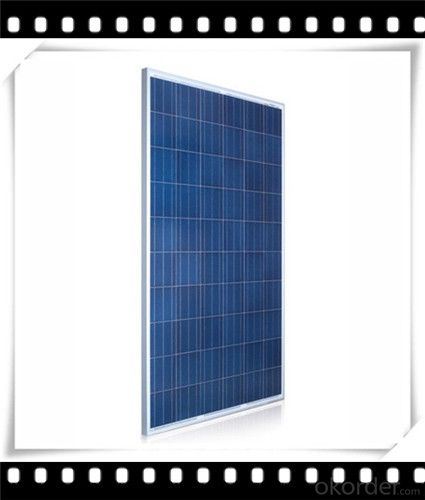
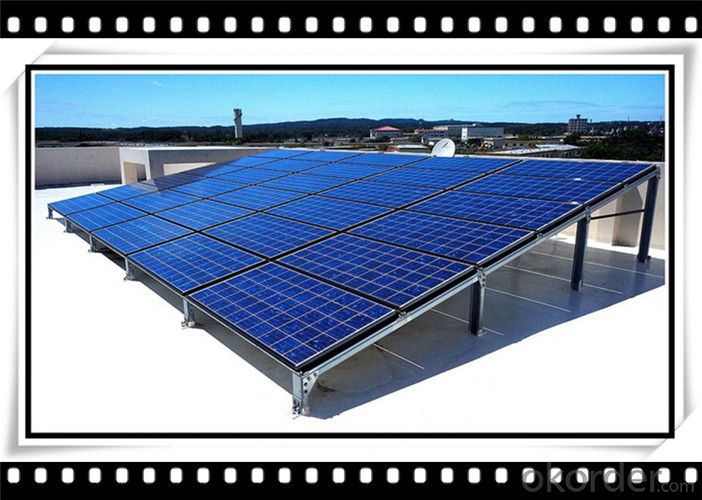
Specifications:
+/-3% |
Polycrystalline silicon solar cells (156 x 156mm) |
60 (10 x 6) |
1650 x 990 x 40 |
25.5 |
Limits:
Operating Temperature | -40~+85? |
Storage Temperature | -40~+85? |
Maximum System Voltage | 1000 VDC max. |
Hail Impact | Diameter of 28mm with impact speed |
Temperature and Coefficients:
NOCT | 48C+/-2? |
Voltage temperature coefficient (%/K) | -0.35 |
Current temperature coefficient (%/K) | 0.05 |
Power temperature coefficient (%/K) | -0.45 |
Characteristics:
Model: | SGM-200P | SGM-210P | SGM-220P |
Max-power voltage Vmp (V) | 29.2 | 29.4 | 29.41 |
Max-power current Imp (A) | 6.85 | 7.14 | 7.48 |
Open-circuit voltage Voc (V) | 36.5 | 36.69 | 36.9 |
Short-Circuit Current Isc (A) | 7.28 | 7.6 | 7.93 |
Max-power Pm(W) | 200 | 210 | 220 |
Model: | SGM-230P |
Max-power voltage Vmp (V) | 29.8 |
Max-power current Imp (A) | 7.72 |
Open-circuit voltage Voc (V) | 37.31 |
Short-Circuit Current Isc (A) | 8.19 |
Max-power Pm(W) | 230 |
STC: Irradiance 1000W/m2, module temperature 25?, AM-=1.5
Poly Crystalline Solar Panels Specifications Range
Maximum Power (Pm) | Dimension | Weight | Operating Voltage (Vmp) | Operating Current (Imp) | Open Circuit Voltage (Voc) | Short Circuit Current (Isc) |
0.45W | 140x80x10mm | 0.08kg | 3.3V | 150mA | 4.6V | 160mA |
1.0W | 162x140x10mm | 0.16kg | 7.5V | 150mA | 10.3V | 160mA |
4.5W | 269x251x23mm | 0.8kg | 16.5V | 0.27A | 20.5V | 0.3A |
10W | 420.1×268.9×22.6mm | 1.92kg | 17.5V | 0.58A | 20.5V | 0.6A |
20W | 425x502x50mm | 3.0kg | 16.8V | 1.19A | 21.0V | 1.29A |
30W | 593x502x22.6mm | 3.9kg | 16.8V | 1.78A | 21.0V | 1.94A |
40W | 655x537x50mm | 5.75kg | 17.3V | 2.31A | 22.1V | 2.54A |
50W | 839x537x50mm | 6.0kg | 17.5V | 2.9A | 21.8V | 3.17A |
65W | 1111x502x50mm | 7.2kg | 17.6V | 3.69A | 22.1V | 3.99A |
80W | 1204x537x50mm | 7.7kg | 17.6V | 4.55A | 22.1V | 4.8A |
- Q: Are there any disadvantages to using solar panels?
- Yes, there are a few disadvantages to using solar panels. Firstly, the initial installation cost can be relatively high, making it a less affordable option for some individuals or businesses. Additionally, solar energy production relies on sunlight, which means that solar panels are less effective during cloudy or rainy days, or at night. This intermittency requires a backup energy source or energy storage system, adding to the overall cost. Moreover, solar panels require a significant amount of space for installation, which may not be feasible in densely populated areas. Lastly, the manufacturing process of solar panels can have environmental impacts, as it involves the use of certain materials and chemicals. However, it is worth noting that continuous advancements in technology are reducing these disadvantages, making solar panels an increasingly viable and sustainable energy solution.
- Q: Can solar panels be installed in a desert environment?
- Yes, solar panels can be installed in a desert environment. In fact, deserts are often ideal for solar panel installations due to their high levels of sunlight and minimal cloud cover. The dry climate also helps to minimize dust buildup on the panels, making maintenance easier.
- Q: How do solar panels interact with the electrical grid?
- Solar panels interact with the electrical grid through a process called net metering. When solar panels generate excess electricity, it is fed back into the grid, allowing homeowners or businesses to receive credits for the energy produced. During periods of low solar production, such as at night, electricity is drawn from the grid. This bidirectional flow of electricity enables solar panel owners to offset their energy consumption and contribute to the overall grid supply.
- Q: Can solar panels be used on boats or RVs?
- Yes, solar panels can be used on boats or RVs. In fact, they are a popular and efficient way to generate electricity for these mobile applications.
- Q: By best I mean safest places. If I were to install them on my roof am I risking due to damage from weathering? Such as rain or snow. I don't get very high winds around here, nor any natural disasters such as hurricanes or tornadoes. Does anyone have solar panels that have been durable for a long time? Is it worth the investment?
- The best place is where they get the most sunshine. Naturally they will be exposed to rain and snow.
- Q: I want to also know if the 0 watt rating on the solar panel is 0 watts per day or is it constantly adding 0 watts? Is there a time which the 0 watts is being added like 0 watts per second or 0 watts per minute and so on?
- a 0w solar panel means at peak efficiency ( high noon, panel pointed flat at the sun, hitting it at 90 degrees), you will get 0 watts (at any given second). Watts = volts x amps a 2volt battery needs an incoming current of at least 3 volts to charge it; 3.5 volts is better. so if the output VOLTAGE of the panel is less than 3 volts it wont do anything. Even if it is, 0 / 3.5 = .74 amp.( three quarters). It will take forever and a day to charge a deeply discharged deep cycle battery.......... consider that a small 0v battery charger is putting out 3-5 amps ( or 3 x 0 =330 Watts) and the alternator on a car is putting out 20 to 50 amps at 4 volts ( 280 to 730 Watts).
- Q: Can solar panels be installed on a streetlight?
- Yes, solar panels can be installed on a streetlight. This allows the streetlight to be powered by solar energy, reducing reliance on the electrical grid and contributing to a more sustainable and cost-effective lighting solution.
- Q: How do solar panels affect roof warranty?
- Solar panels can potentially affect roof warranties because their installation requires drilling holes in the roof, which can compromise its integrity. However, many solar companies offer warranties that cover any damages caused by the installation process, ensuring that the roof warranty remains intact. It is important to check with both the solar company and the roofing manufacturer to understand the impact of solar panels on the roof warranty.
- Q: Can solar panels be installed on a military base?
- Yes, solar panels can be installed on a military base. In fact, many military bases around the world have already implemented solar energy systems as part of their efforts to reduce reliance on fossil fuels and promote renewable energy. Solar panels provide a sustainable and cost-effective source of electricity for various facilities and operations on the base. Additionally, the installation of solar panels on military bases can contribute to energy independence, resiliency, and environmental sustainability.
- Q: I live in Hawaii and having a solar panel is not a bad idea since we have plenty of sun the only problem is that it cost a lot of money and takes many years before you get your money back. There are kits available where you can make and install your own solar panel and wind turbine but is it bull **** or is it a good deal?
- go with wind power
Send your message to us
FS22 Solar Panels - 1W Poly Mini Newest Solar Panel CNBM
- Loading Port:
- Qingdao
- Payment Terms:
- TT OR LC
- Min Order Qty:
- 10 set
- Supply Capability:
- 300000 set/month
OKorder Service Pledge
OKorder Financial Service
Similar products
Hot products
Hot Searches
Related keywords
